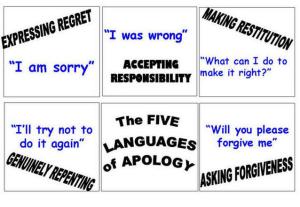TAKE THE TEST
Directions: This is a printable test to take yourself and give to your friends. Print out this page first. Get a blank sheet of lined paper. Every time you read a description or characteristic that applies to you, write down its number on the blank sheet of paper. There is no certain number of characteristics you must choose. After you are done, scroll to the bottom of the page to view the key. Next to every number on your paper, write whether it was a L or an R. Count up the number of L’s and R’s. Whichever number is higher represents your dominance. If the numbers are close, that means you use both sides of your brain equally.
- I constantly look at a clock or wear a watch
- I keep a journal or diary of my thoughts
- I believe there is a right and wrong way to do everything
- I find it hard to follow directions precisely
- The expression “Life is just a bowl of cherries” makes no sense to me
- I frequently change my plans and find that sticking to a schedule is boring
- I think it’s easier to draw a map than tell someone how to get somewhere
- To find a lost item, I try to picture it in my head where I last saw it
- I frequently let my emotions guide me
- I learn math with ease
- I’d read the directions before assembling something
- People tell me I am always late getting places
- People have told me that I’m psychic
- I need to set goals for myself to keep me on track
- When somebody asks me a question, I turn my head to the left
- If I have a tough decision to make, I write down the pros and the cons
- I’d probably make a good detective
- I learn music with ease
- To solve a problem, I think of similar problems I have solved in the past
- I use a lot of gestures
- If someone asks me a question, I turn my head to the right
- I believe there are two ways to look at almost everything
- I have the ability to tell if people are lying or guilty of something, just by looking at them
- I keep a “to do” list
- I am able to thoroughly explain my opinions in words
- In a debate, I am objective and look at he facts before forming an opinion
- I’ve considered becoming a poet, a politician, an architect, or a dancer
- I always lose track of time
- When trying to remember a name I forgot, I’d recite the alphabet until I remembered it
- I like to draw
- When I’m confused, I usually go with my gut instinct
- I have considered becoming a lawyer, journalist, or doctor
Print this test out and give it to your friends. Don’t forget to print out the key, so you can add up the number of R’s and L’s.
Knowing what side of your brain you are,will help you have an understanding of your self.
If your friends and colleagues also take the test,you will have a better understanding of them.
My business partner is Right brain and I am left brain
I am left brain orientated,What are you?
Here is the key:
- L
- L
- L
- R
- L
- R
- R
- L
- R
- L
- L
- R
- R
- L
- R
- L
- L
- R
- R
- R
- L
- R
- R
- L
- L
- L
- R
- R
- L
- R
- R
- L
Are you left brain or right?
Please submit your comments.















